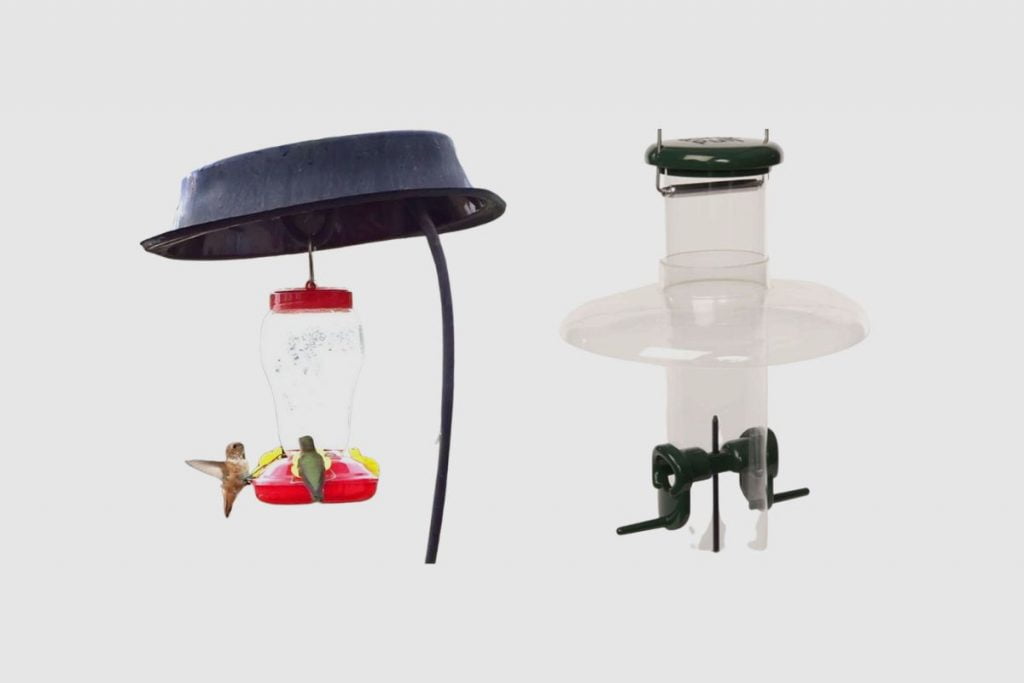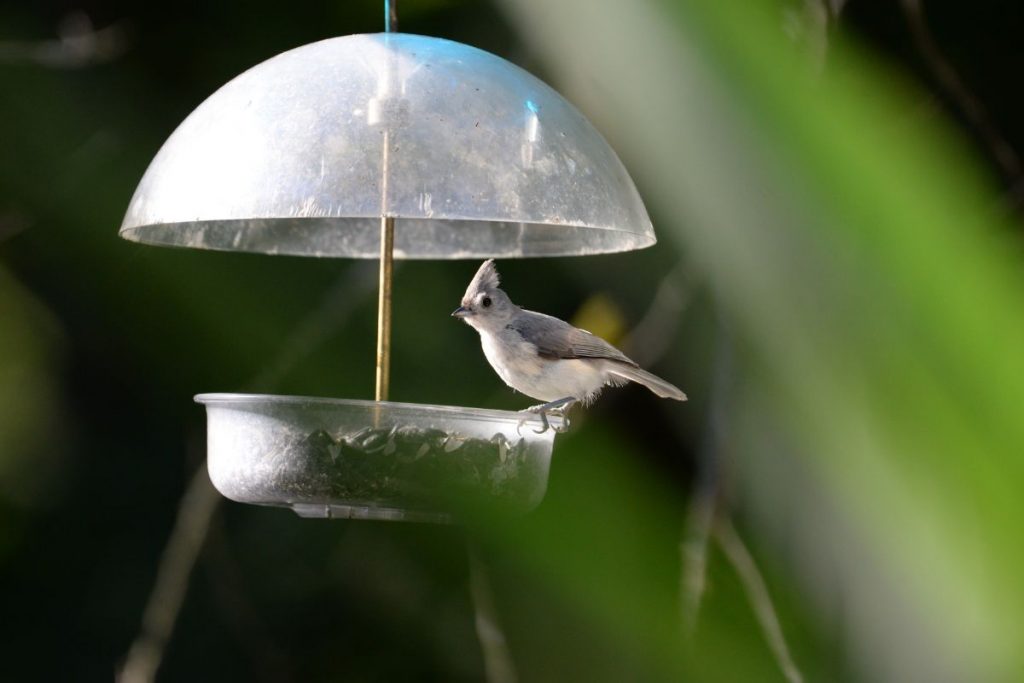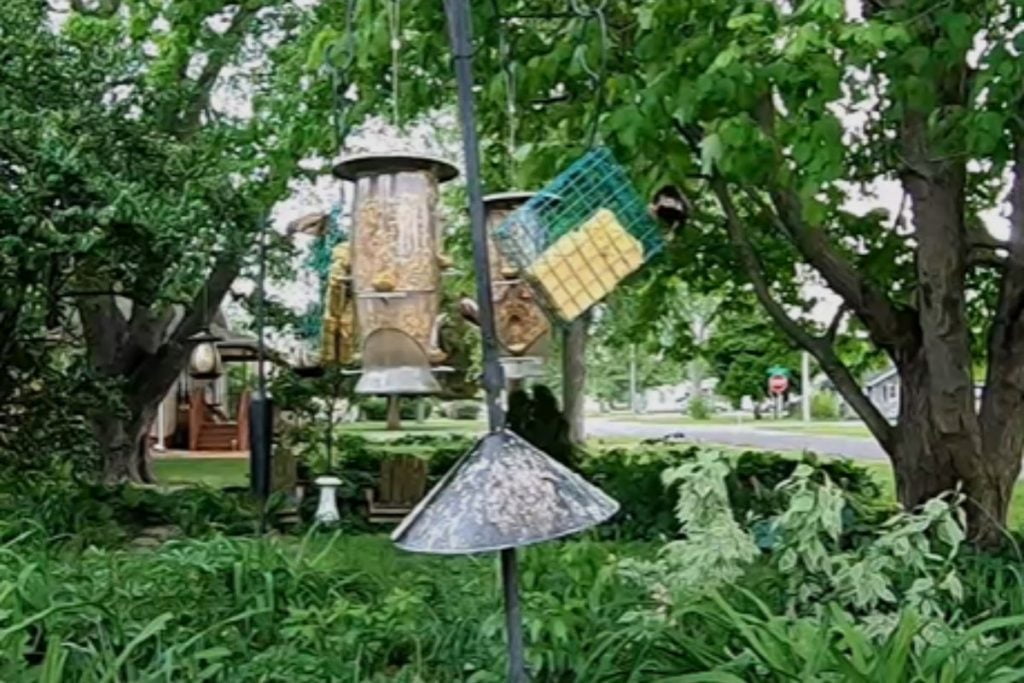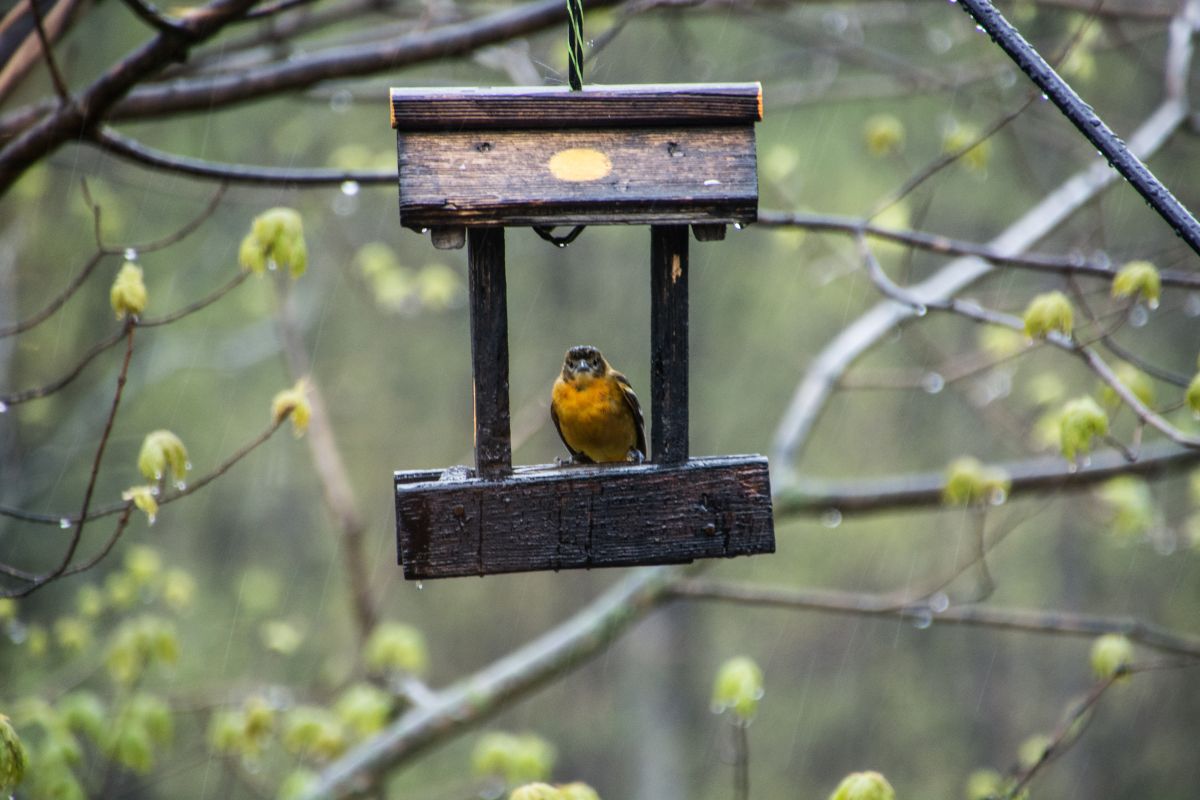Rain is a natural part of the environment, but it can pose challenges for bird enthusiasts who want to keep their feathered friends well-fed. Many people wonder if it’s okay to leave bird feeders out when the skies open up.
In this blog post, we will explore the ins and outs of keeping bird feeders out in rainy weather, discussing the potential risks, benefits, and best practices to ensure both the birds’ well-being and the longevity of your feeders.
Key Takeaways
Bird feeders can generally be left out in the rain, but precautions should be taken to protect the food and feeder. While some rain-resistant feeders are designed for wet weather, regular maintenance and proper placement can help prevent issues like mould growth and food spoilage.
Related Post: Does Bird Feeders Attract Rats?

Is it Safe to Keep Bird Feeders Outside During Rainfall?
Yes, you can leave bird feeders out in the rain, but it’s important to take precautions. Many birds continue to feed during light rain, so providing food can be beneficial. However, wet seed can spoil quickly, potentially harming birds.
Now, let’s take a closer look at this topic and explore all the aspects of maintaining bird feeders in rainy conditions.
Understanding the Impact of Rain on Bird Feeders
Rain can affect bird feeders in several ways, and it’s crucial to understand these impacts to make informed decisions about feeder placement and maintenance.
Seed Spoilage
One of the primary concerns with leaving bird feeders out in the rain is the potential for seed spoilage. When seeds get wet, they can quickly develop mould and bacteria, which can be harmful to birds if ingested. This is especially true for seeds like sunflower seeds, which have a high oil content and are more prone to spoilage when exposed to moisture.
Feeder Damage
Depending on the material of your bird feeder, prolonged exposure to rain can cause damage. Wooden feeders may warp or rot, while metal feeders might rust. Even plastic feeders can deteriorate over time if constantly exposed to the elements.
Attracting Unwanted Guests
Wet bird seed can attract unwanted visitors to your garden. Rodents, squirrels, and other pests might be drawn to the soggy seed, potentially creating additional problems in your outdoor space.
Bird Behaviour Changes
While many birds will continue to feed during light rain, heavy downpours might discourage them from visiting your feeder. Understanding how rain affects bird behaviour can help you decide whether to leave your feeders out or bring them in during particularly wet periods.

Types of Rain-Resistant Bird Feeders
Fortunately, there are bird feeders designed specifically to withstand rainy conditions. Let’s explore some of the options available:
Hopper Feeders
Hopper feeders typically have a roof-like structure that helps keep the seed dry. They often feature small drainage holes to prevent water from accumulating inside.
Tube Feeders
Many tube feeders come with rain guards or covers that fit over the feeding ports, preventing water from entering the main seed chamber.
Platform Feeders with Drainage
Some platform feeders are designed with mesh or perforated bottoms that allow water to drain away, keeping the seed drier.
Weather Domes
These large, clear plastic domes can be attached to existing feeders to provide protection from rain and snow.

Best Practices for Maintaining Bird Feeders in Rainy Weather
To ensure the safety of birds and the longevity of your feeders, consider implementing these best practices:
- Regular Cleaning: Clean your feeders more frequently during rainy periods to prevent mould growth.
- Use Weather-Resistant Seeds: Some seeds, like safflower and millet, are more resistant to moisture than others.
- Provide Shelter: Place feeders under eaves or trees to offer some natural protection from rain.
- Use Smaller Quantities: Fill feeders with smaller amounts of seed during rainy periods to reduce waste.
- Consider Removable Trays: Use feeders with removable trays that can be easily emptied and cleaned.
- Monitor Seed Quality: Check the seed regularly for signs of mould or spoilage, especially after heavy rain.
The Benefits of Keeping Feeders Out in Light Rain
While heavy rain can pose challenges, there are benefits to keeping feeders out during light rain or drizzle:
- Continued Food Source: Birds still need to eat during rainy weather, and having a reliable food source can be crucial.
- Natural Behaviour: Many birds are adapted to foraging in light rain, so providing food aligns with their natural behaviour.
- Observation Opportunities: Rainy days can offer unique bird-watching experiences as different species may visit your feeder.
When to Bring Feeders Indoors
While it’s generally okay to leave feeders out in light rain, there are situations when it’s best to bring them inside:
- During severe storms or hurricanes
- If you’re away for an extended period and can’t maintain the feeder
- When local wildlife authorities advise bringing in feeders (e.g., during disease outbreaks)
Alternative Feeding Methods for Rainy Days
If you’re concerned about leaving your regular feeders out in the rain, consider these alternative feeding methods:
- Covered Feeding Stations: Create a sheltered area in your garden where you can place feeders during rainy periods.
- Window Feeders: These feeders attach directly to your window and are naturally sheltered by your home’s eaves.
- Suet Feeders: Suet cakes are less affected by rain and can provide high-energy food for birds during wet weather.
- Ground Feeding: Some birds prefer to feed on the ground. Scattering a small amount of seed in a sheltered area can cater to these species.
The Importance of Clean Water Sources
While we’re focusing on food, it’s worth mentioning the importance of providing clean water sources for birds, especially during rainy periods:
- Bird baths can become contaminated with debris during rain
- Regularly clean and refill bird baths to ensure a safe drinking source
- Consider installing a bird bath with a water mover to prevent stagnation

Seasonal Considerations for Rainy Weather Feeding
The impact of rain on bird feeding can vary depending on the season:
Spring
- Many birds are nesting and have increased energy needs
- Providing reliable food sources can be crucial for breeding success
Summer
- Natural food sources are more abundant, but feeders can still supplement diets
- Be extra vigilant about seed spoilage in warm, humid conditions
Autumn
- Migratory birds may rely on feeders to build up energy reserves
- Ensure feeders are well-maintained as birds prepare for winter
Winter
- Cold, wet conditions can make finding food challenging for birds
- High-energy foods like suet become particularly important
Educating Others About Responsible Bird Feeding
As a bird enthusiast, you can play a role in educating others about responsible bird feeding practices during rainy weather:
- Share your knowledge with neighbours and fellow bird watchers
- Encourage the use of rain-resistant feeders and proper maintenance
- Promote the importance of providing safe, clean food sources for wild birds
The Wider Impact of Bird Feeding in Wet Conditions
Consider the broader ecological impact of your bird feeding practices:
- Supporting bird populations during challenging weather conditions
- Potential effects on local ecosystems and bird behaviour
- The role of backyard bird feeding in conservation efforts
Monitoring and Adapting Your Feeding Practices
Remember that bird feeding is not a one-size-fits-all activity. It’s important to:
- Observe which birds visit your feeders during different weather conditions
- Adapt your feeding practices based on local bird populations and needs
- Stay informed about best practices and any local guidelines or restrictions
Final Thoughts
Leaving bird feeders out in the rain can be done safely and effectively with the right approach. By choosing appropriate feeders, maintaining them properly, and being mindful of the conditions, you can continue to support your local bird population even during wet weather.
Remember, the key is to balance the birds’ needs with the practical considerations of feeder maintenance and food safety.
